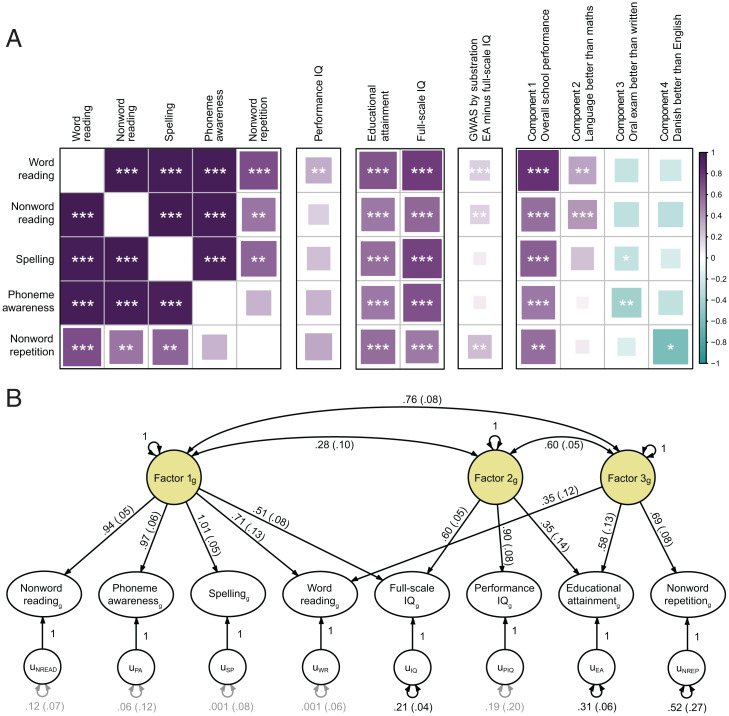Fig. 1.
Reading- and language-related traits have a shared genetic architecture that is largely independent of performance IQ. (A) Genetic correlations (rg) among the reading- and language-related traits estimated with LDSC. Estimates are capped at one. Full LDSC results are reported in Dataset S4. In addition, genetic correlations are given between the GenLang traits and 1) performance IQ (using GenLang cohorts only); 2) educational attainment (EA; n = 766,345) and full-scale IQ (n = 257,828) (18); 3) noncognitive abilities involved in EA, resulting from a recent GWAS by subtraction study (n = 510,795) (19); and 4) components associated with distinct performance domains identified used a decomposition analysis of Danish school grades (n = 30,982) (20). Full results can be found in Dataset S8. *Significant genetic correlation after correction for 18.28 independent comparisons (P < 2.74 × 10−3); **P < 2.74 × 10−4; ***P < 2.74 × 10−5. (B) Three-factor model fitted to the GenLang summary statistics for word reading, nonword reading, spelling, phoneme awareness, nonword repetition, and performance IQ and to published GWAS summary statistics for full-scale IQ and EA (18) using GenomicSEM (21). Black and gray paths represent factor loadings with P < 0.05 and P > 0.05, respectively. Standardized factor loadings are shown, with SE in parentheses. The subscript g represents the genetic variables; the u variables represent the residual genetic variance not explained by the models. Unstandardized results and model fit indices are reported in Dataset S9.

